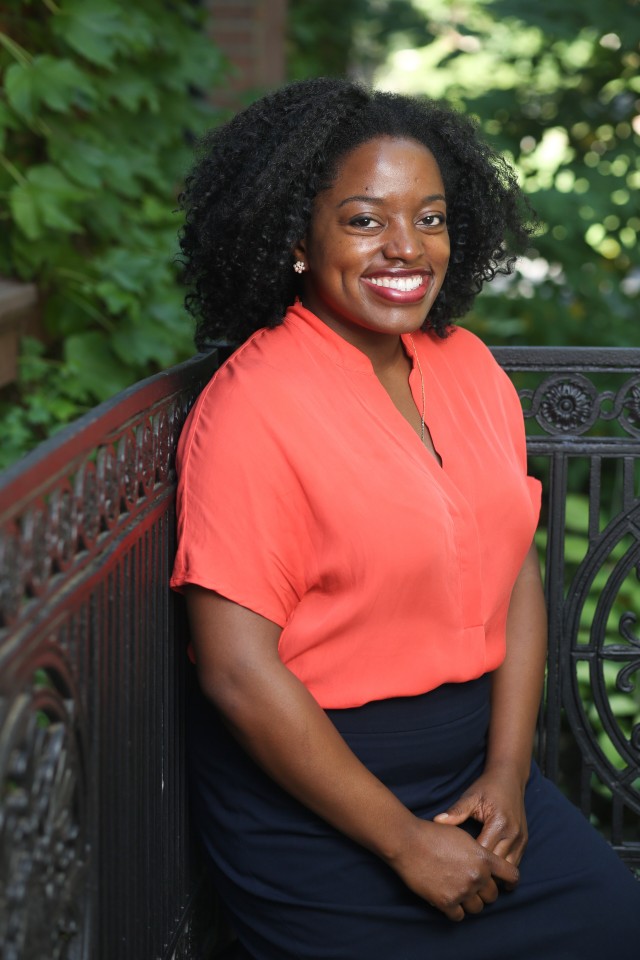A Mindset and a Set of Tools: Five Things to Know About Design Thinking at Smith
Research & Inquiry

Published November 17, 2015
Since she began work as co-director of Smith’s Design Thinking Initiative earlier this fall, Zaza Kabayadondo has been fielding numerous questions about the program from interested students, faculty and staff.
The one she hears most often is: “What exactly is ‘design thinking?’”
Kabayadondo’s answer is as expansive as the college’s initiative promises to be: “Design thinking is a tool kit for digging deeper and for exploring social issues and generating ideas,” she says.
Design thinking offers a framework for questioning how gender, power and ability shape participation in designing the world in which we live and work, Kabayadondo says. It’s a learning strategy that goes beyond technical problem-solving to spark creative engagement.
At Smith, work on design thinking—which has been underway since 2010—got a significant boost this spring when the Branta Foundation awarded the college a $2.5 million grant for a four-year design thinking pilot.
Borjana Mikic, R. B. Hewlett ’40 Professor of Engineering and faculty director of the Design Thinking Initiative, says that as a women’s liberal arts college, Smith is an ideal place for a pilot aimed at incorporating design thinking concepts into student- and faculty-led projects.
“Design thinking at Smith will be a unique reflection of our interests and values,” Mikic says. “We have much to contribute as a community to the growing national conversation about design thinking and the liberal arts.”
Information about design thinking projects and campus-wide challenges— including courses that will be taught over January term and spring semester— can be found on the initiative’s new website.
The site is also home to a new blog, “Smithies Design,” that will be a forum for conversations about design thinking at Smith. The blog invites contributions from campus community members who are using design in their teaching, research and special studies.

Zaza Kabayadondo, co-director of Smith’s Design Thinking Initiative
Kabayadondo, who received a Ph.D. in learning sciences and technology design from Stanford University, says there will be numerous entry points for members of the Smith community as the pilot gets underway.
“You can go to a lecture, sign up for a course or faculty development workshop or participate in a design challenge. It’s a multilayered approach,” she says.
This week, the initiative is co-hosting a talk by TED Fellow David Sengeh, a Harvard/MIT-trained biomechatronics engineer, on “The Design Generation: Africa’s Youth and Large-Scale Innovation.” Sengeh will speak Friday, Nov. 20, from 4:30 to 5:30 p.m. in Neilson Browsing Room about his work teaching design thinking to young people in Sierra Leone.
Kabayadondo’s own journey in design thinking began during her undergraduate years at Wellesley, where she studied graphic arts, animation and 3-D modeling. She decided to pursue a doctorate in learning sciences “because although I was drawn to design, I also wanted to understand learning better. That’s when I discovered design thinking,” she says.
Kabayadondo, who will be teaching a class in design thinking at Smith next semester, brings expertise in education research to her role as “implementer” of the college’s pilot program.
What’s the most important thing to know about design thinking on campus?
“That everyone can be involved,” she says.
Here are five other key elements of design thinking at Smith that Kabayadondo shared with us.
1. Design thinking is a mindset
It’s a framework for becoming more fluent in shifting from analytical thinking to playful and unbounded creating. Design thinking is an active process of learning how to become more collaborative, experimental and human-centered. It involves reviewing ideas, developing prototypes you can learn from, conducting fieldwork and constantly making revisions. For example, the challenge of IDP 116, an Interterm course open to all those who want a hands-on introduction to design thinking, is “design something to empower someone to learn.”
2.Design thinking is not brand new at Smith
The initiative builds on a college tradition of using design to intentionally create new experiences. Design thinking, which already exists in small pockets at Smith, can now be amplified by welcoming to the table more students and faculty who may be non-traditional practitioners of design. Opening up who gets to participate in design is a unique opportunity to enhance the capacities and levels of engagement among students, faculty and staff.
3. Design thinking is for everyone
Design thinking is not just for engineers, business people or designers. It is interdisciplinary and can be applied to any field of inquiry. Smith’s design thinking initiative is at heart an effort to democratize access to design thinking by using it across disciplines to enrich learning on campus.
4. Design thinking is an experiment
The four-year pilot program is an opportunity to experiment with the curriculum and with learning and working spaces on campus. Through the initiative’s programming, students, faculty and staff will participate in projects that combine creative and analytical mindsets. The mission of the initiative is to incorporate design thinking into more spaces on campus and to facilitate ongoing dialogue about the role that design plays in shaping the human condition.
5. Smith can be a pioneer in design thinking
Design thinking encourages students to form a bias toward action. This involves making ideas tangible and using real-world experiments to understand the nuances of social problems. Because Smith is a liberal arts institution and a women’s college, design thinking has the potential to push new boundaries here. Our unique brand of design thinking at Smith will promote a bias toward activism. At Smith, creativity and analytical thinking can be applied to transforming power relationships.